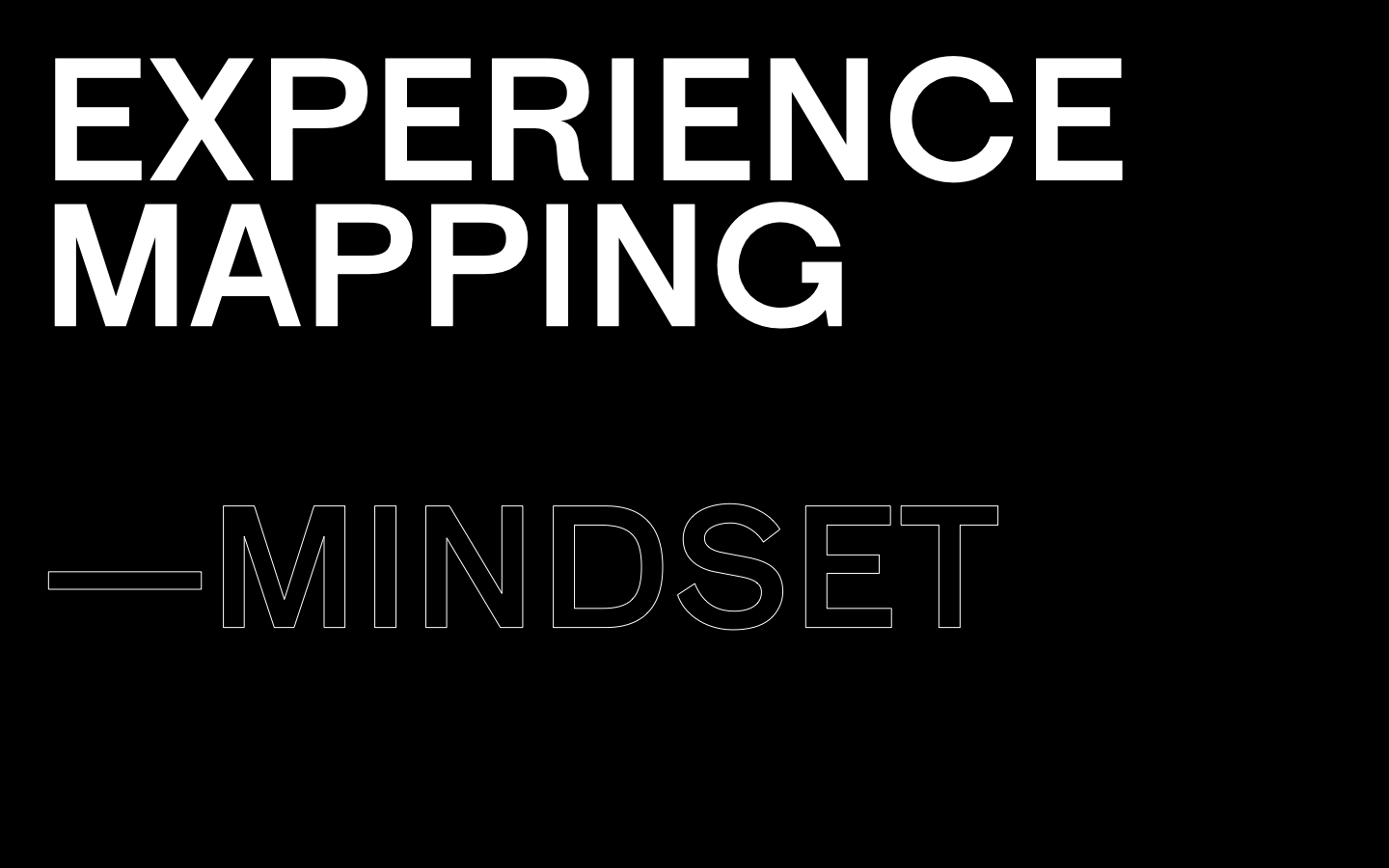
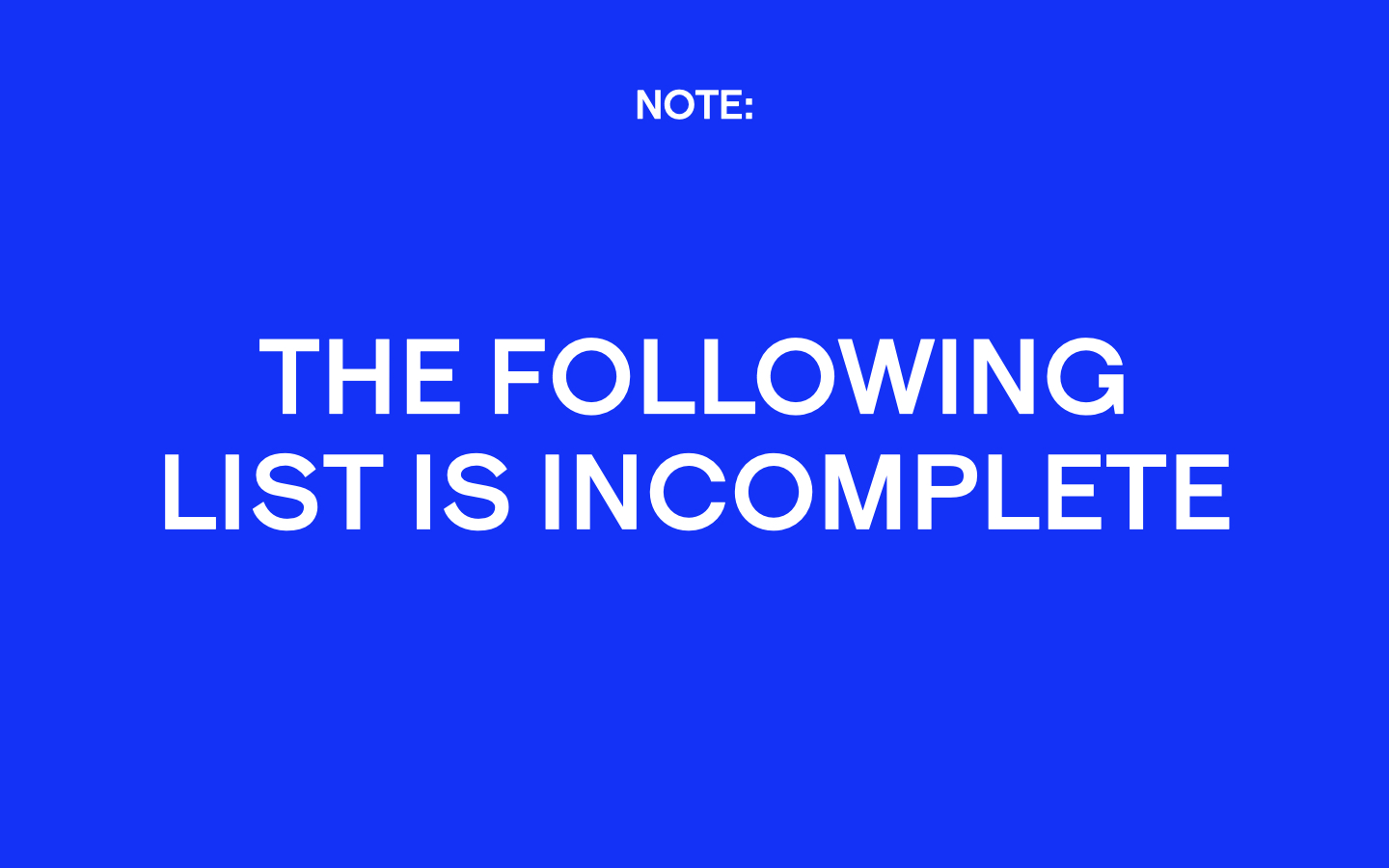
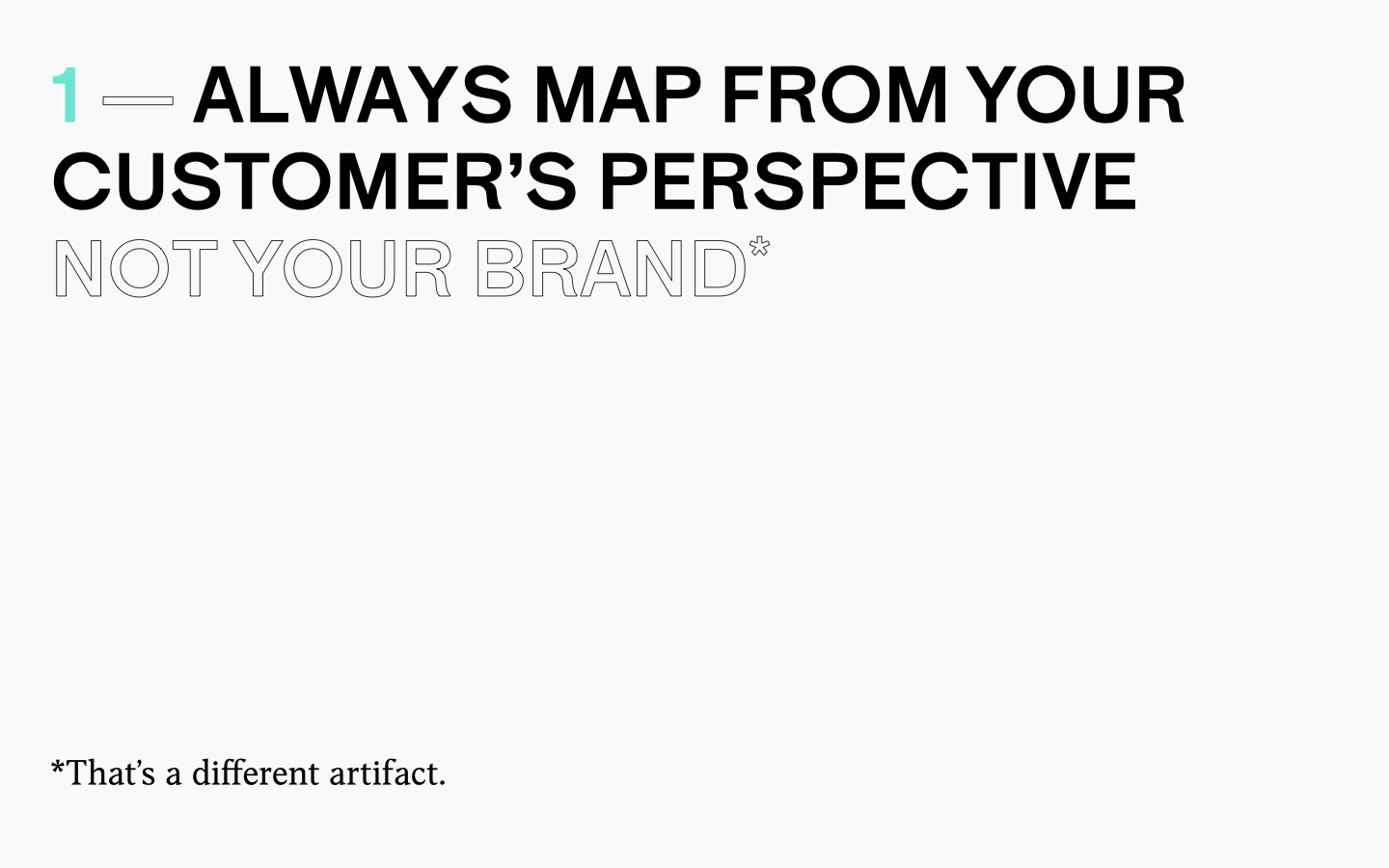
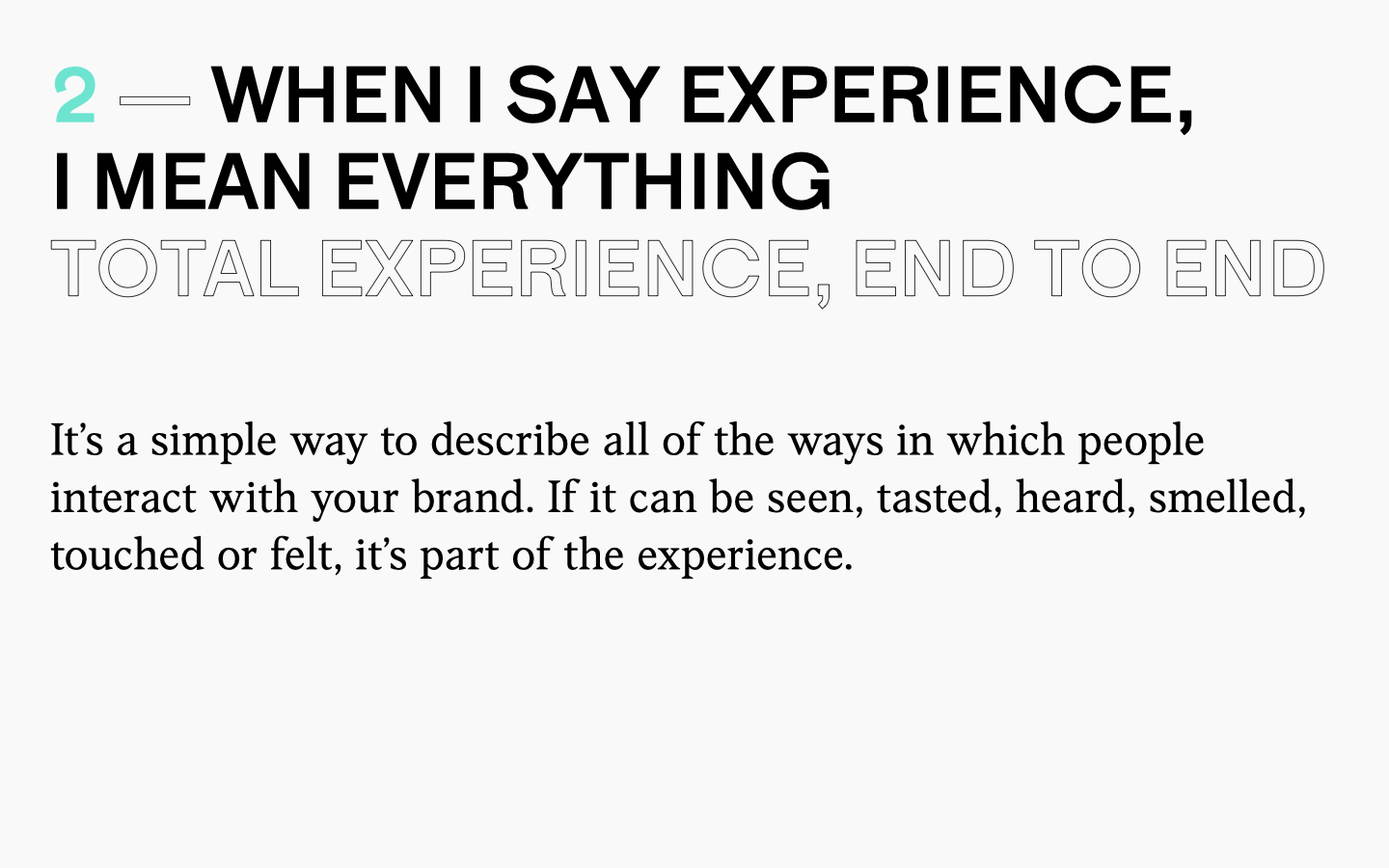
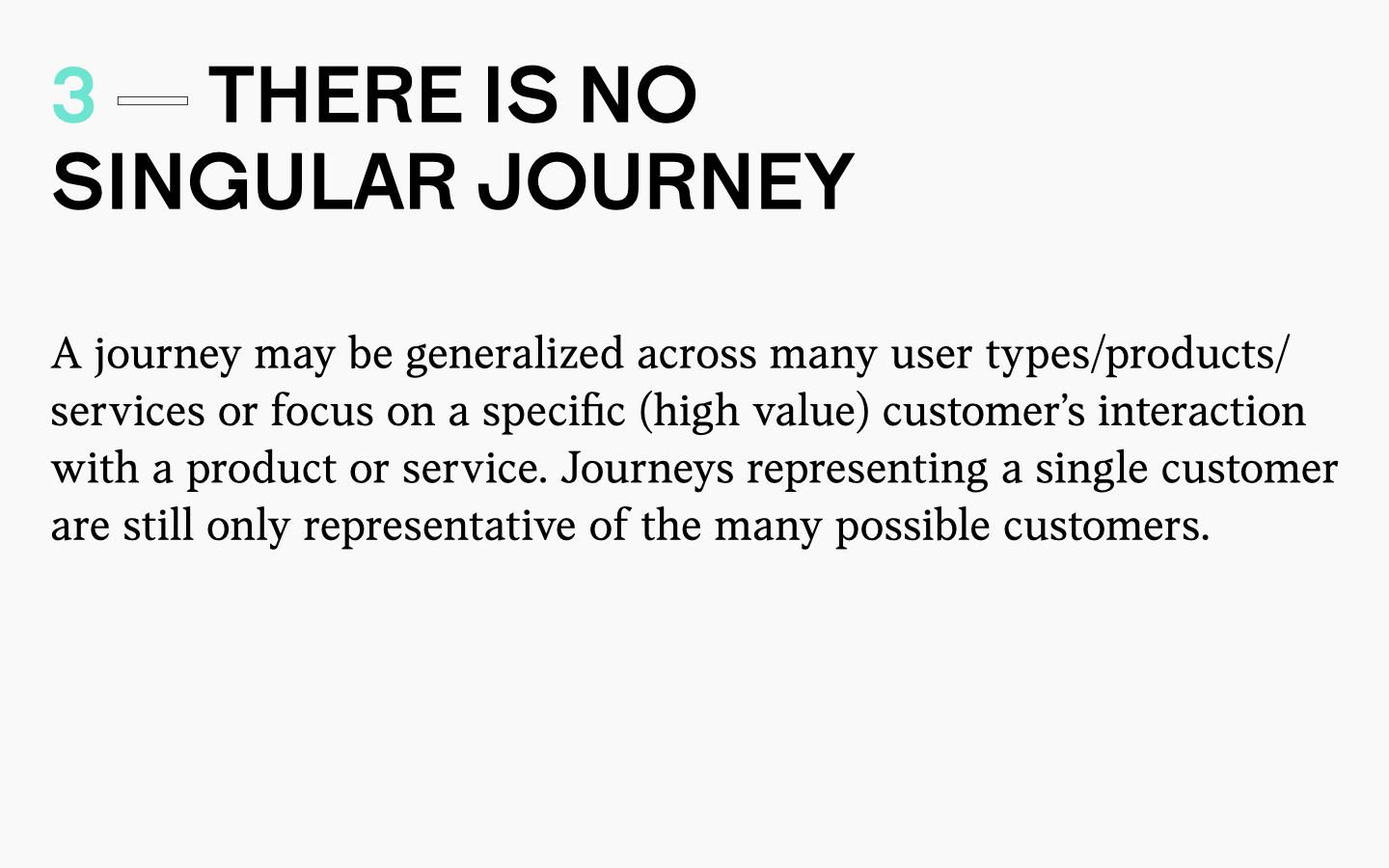

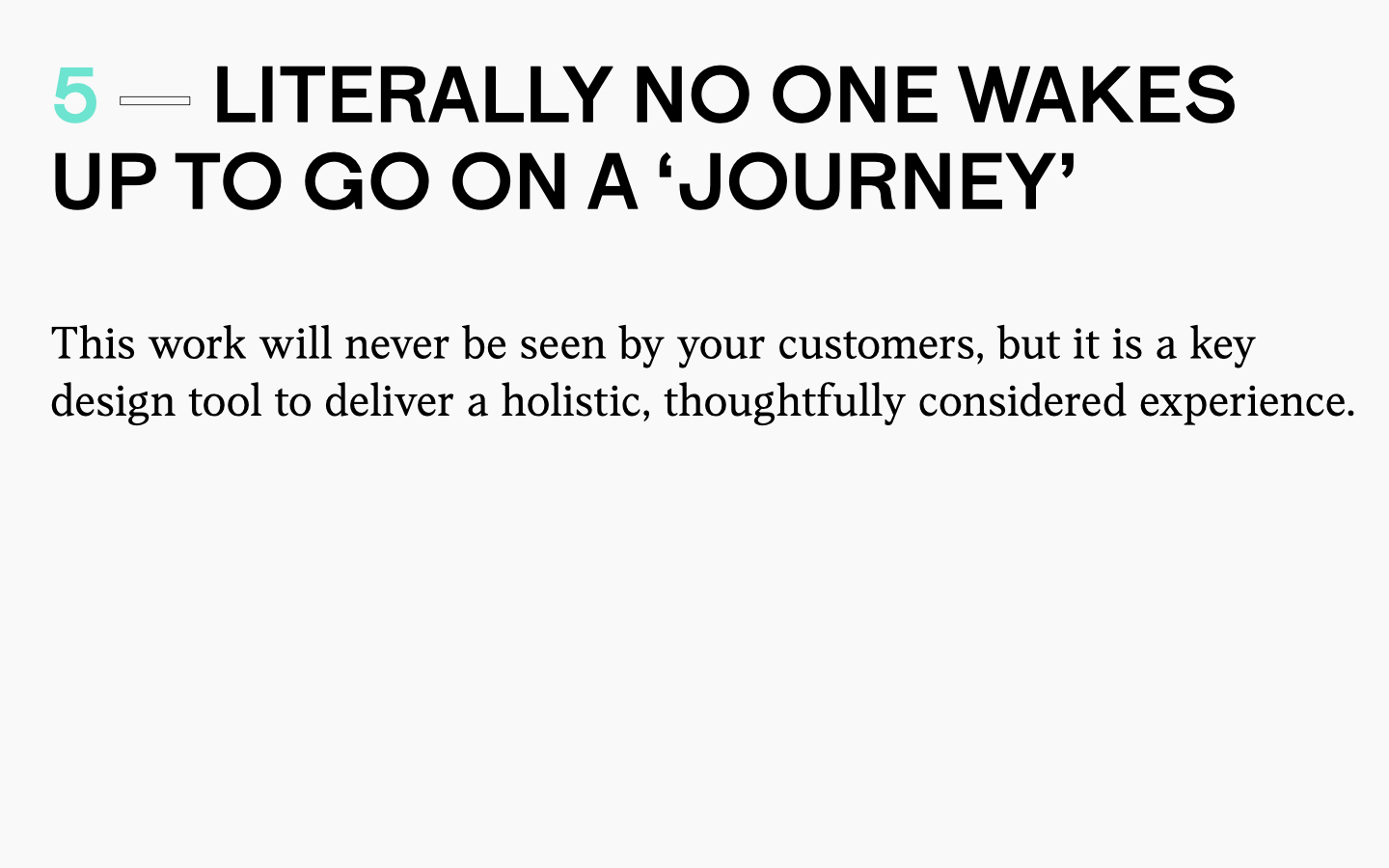
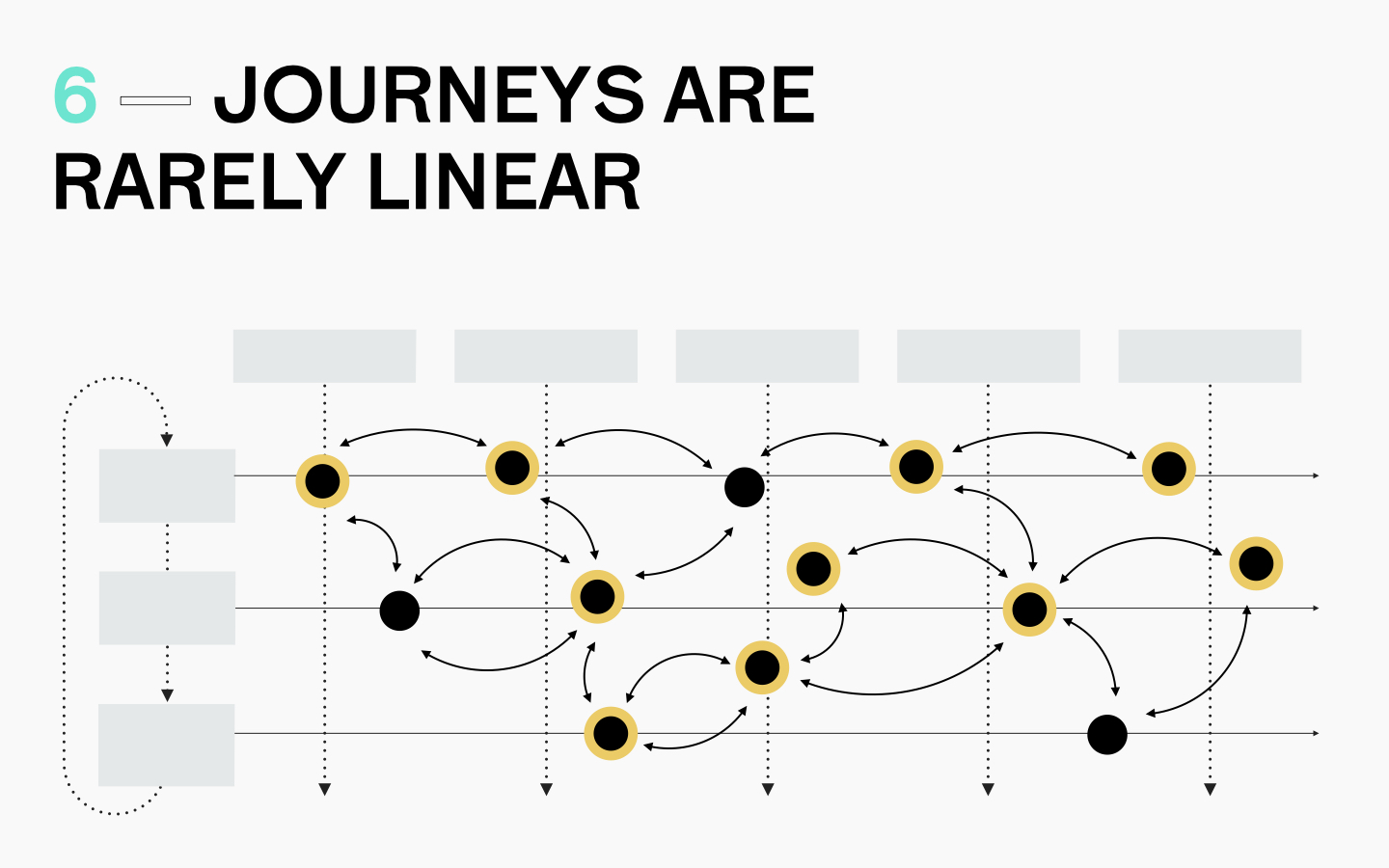
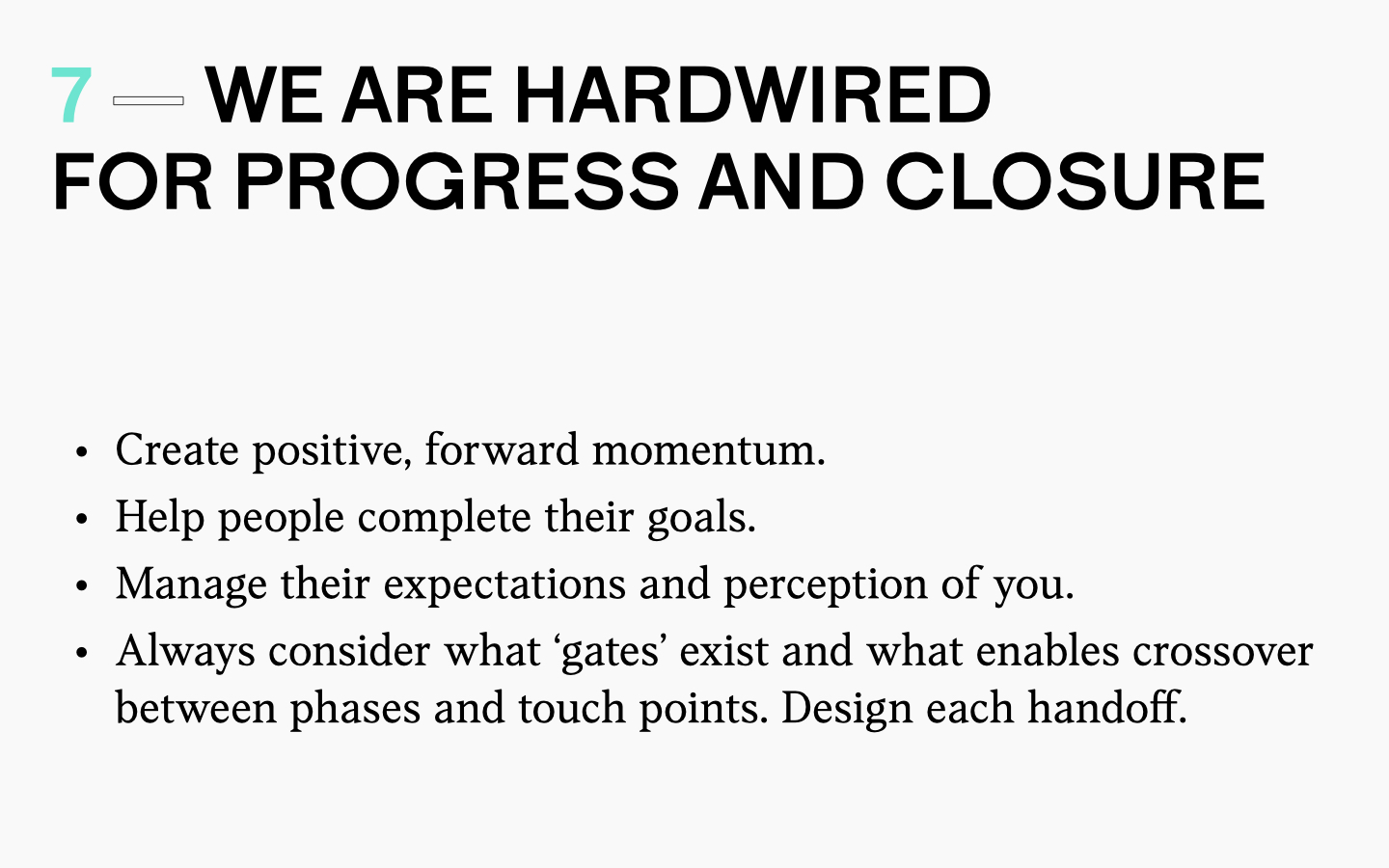
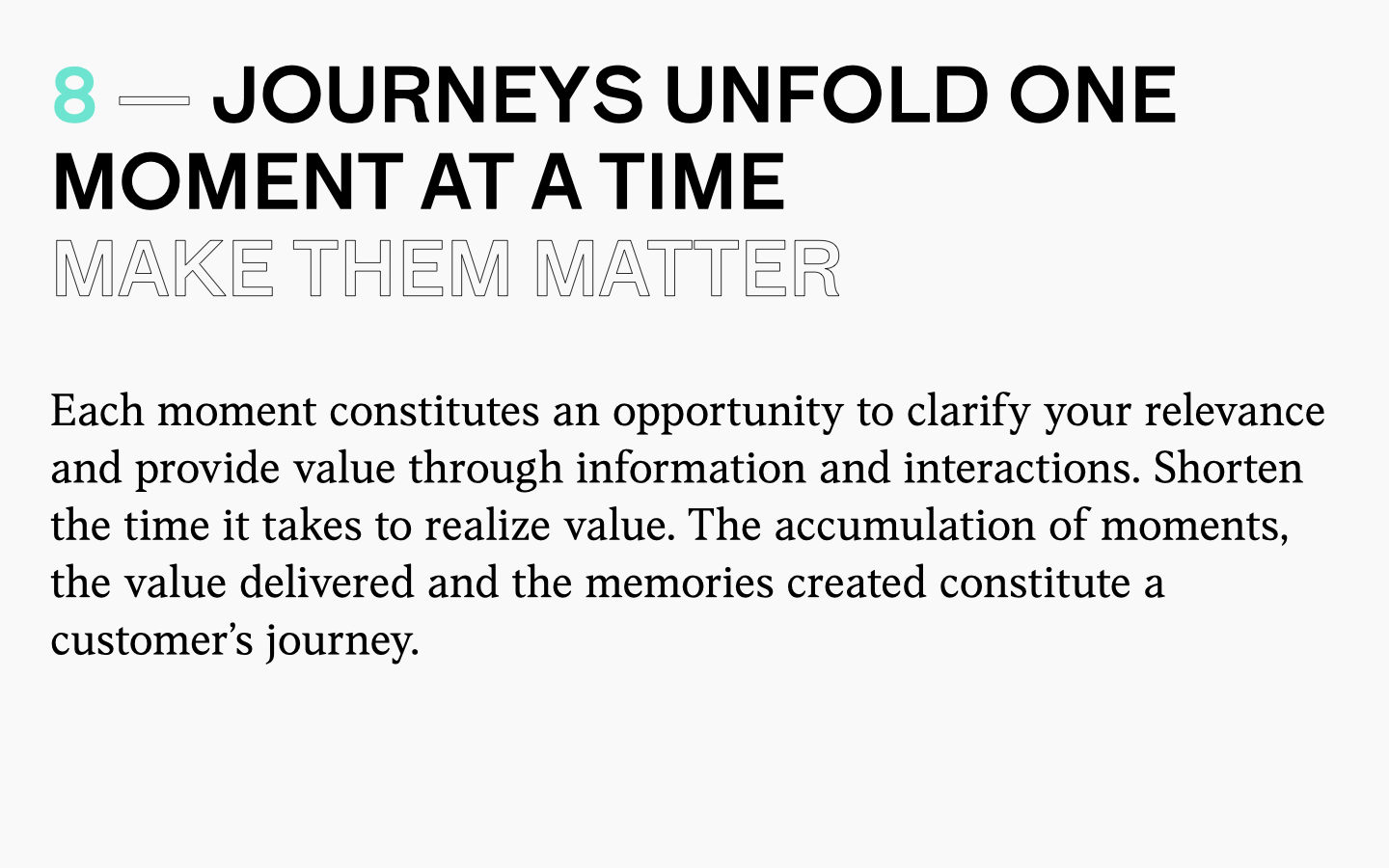
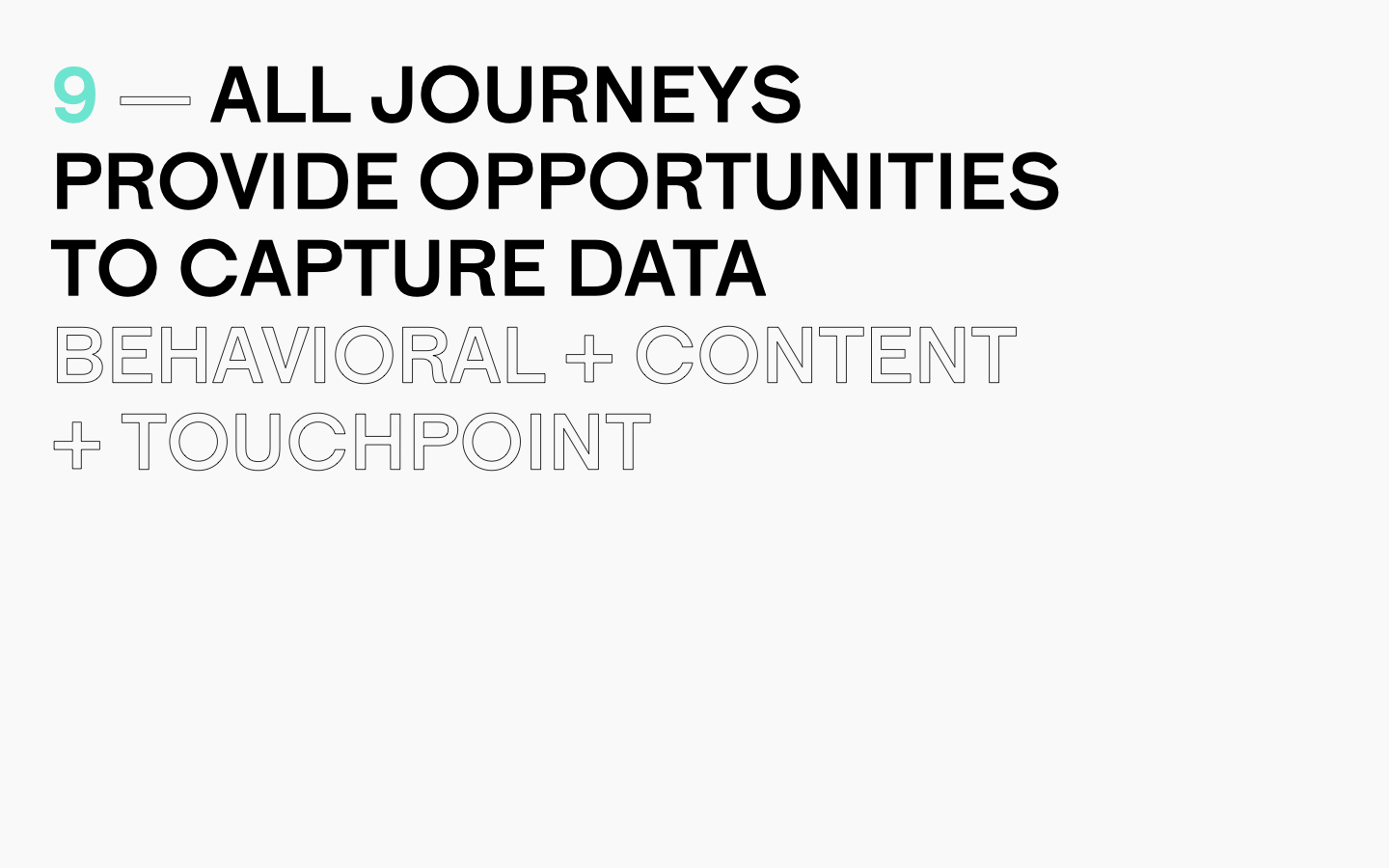
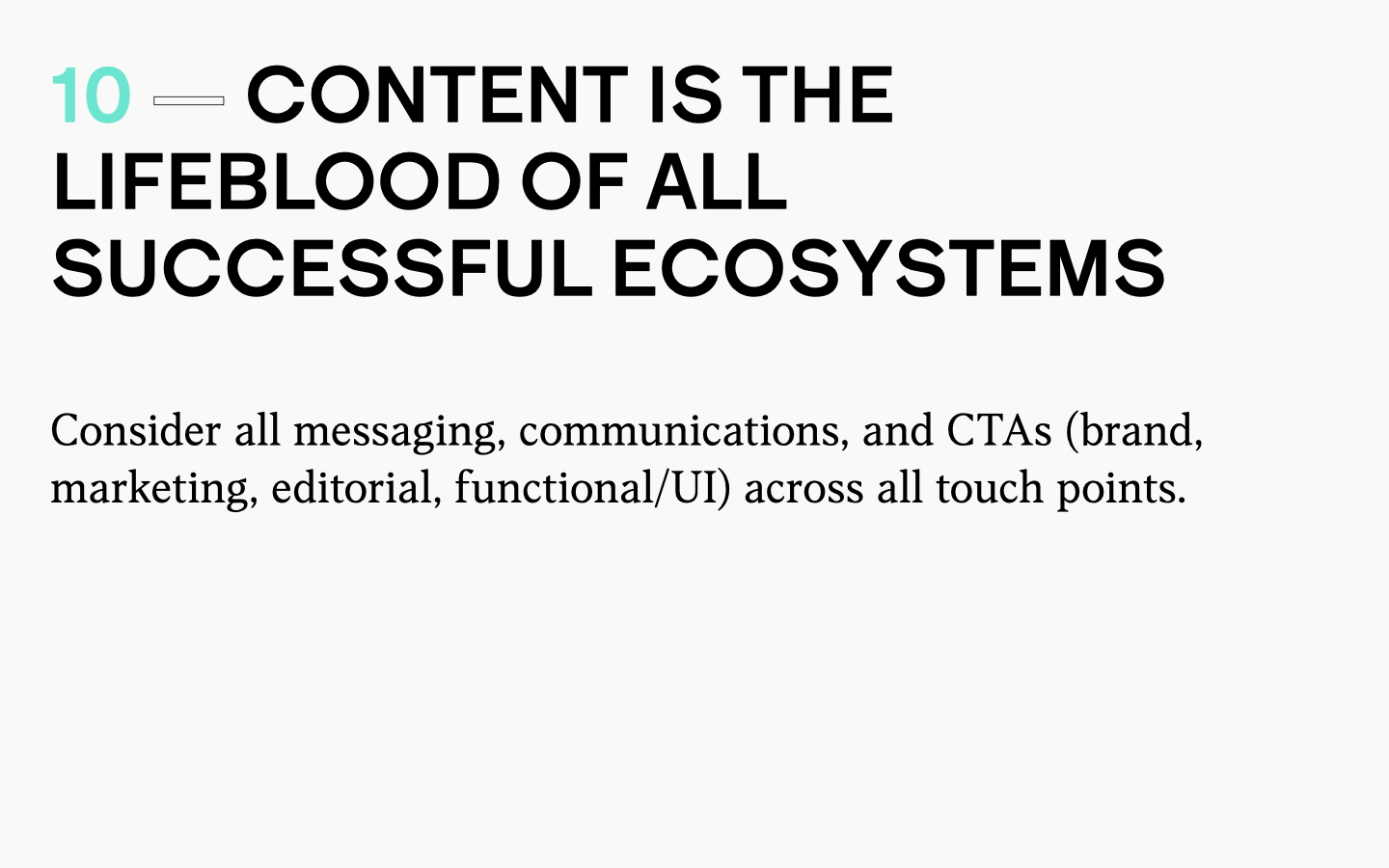
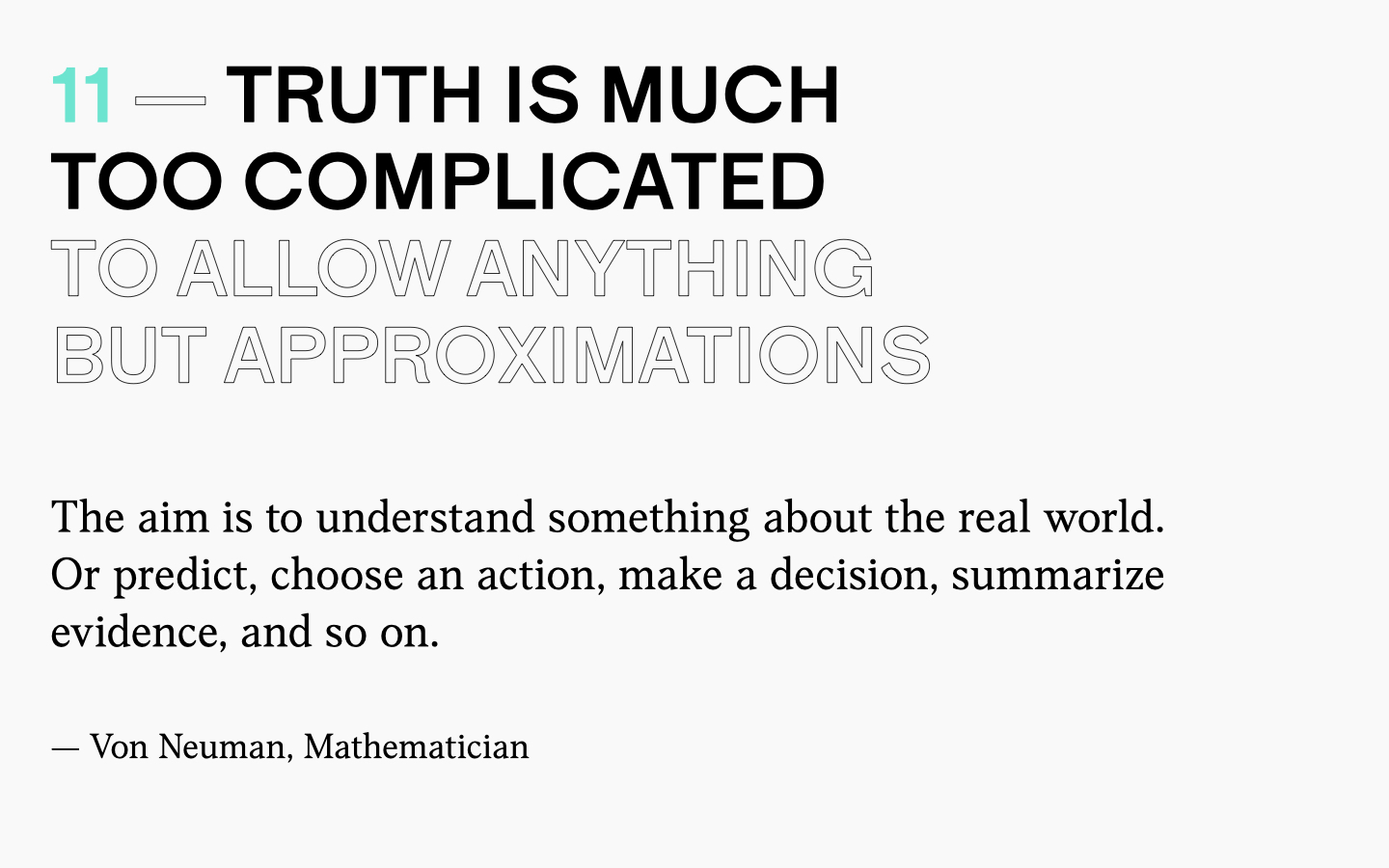
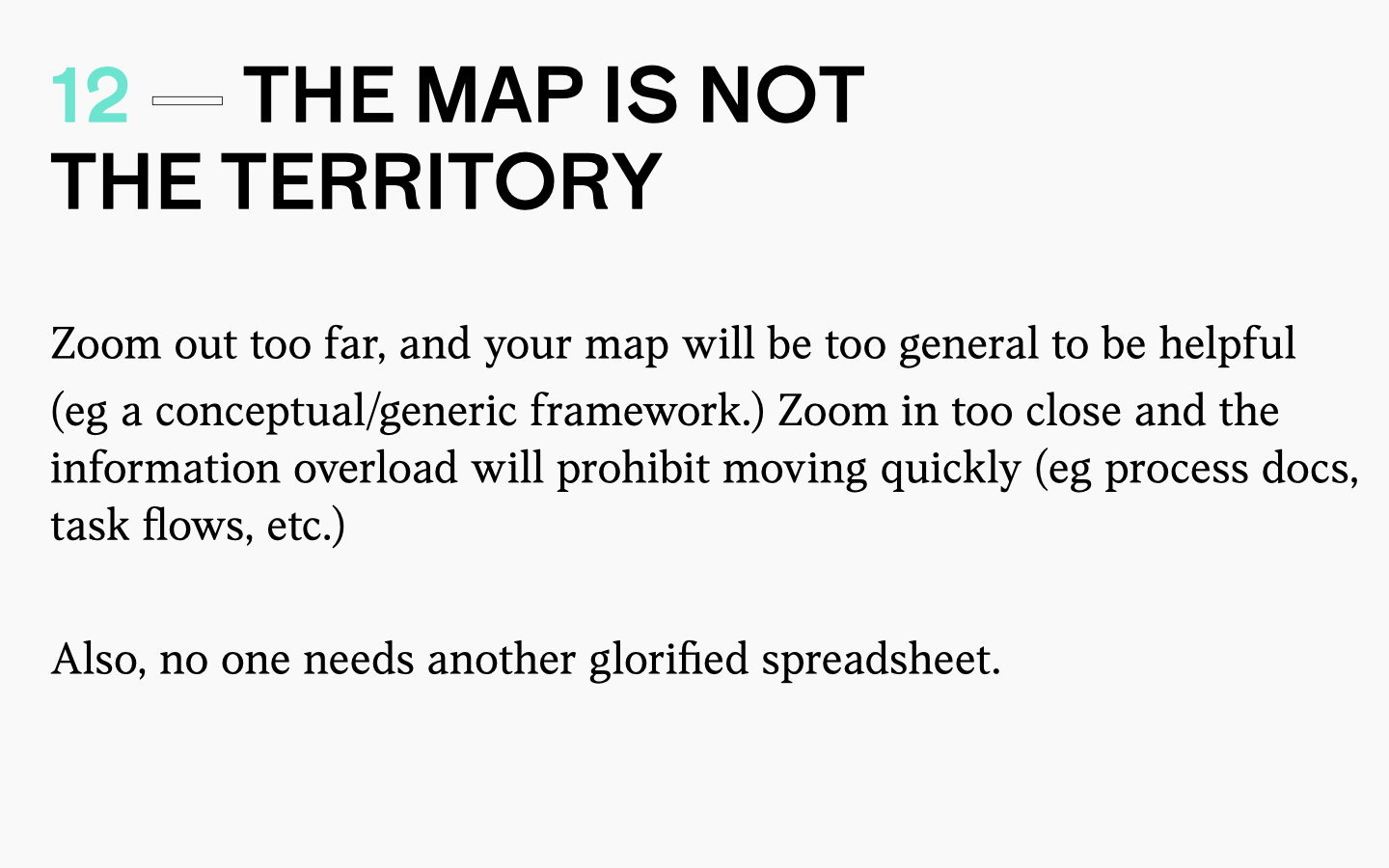
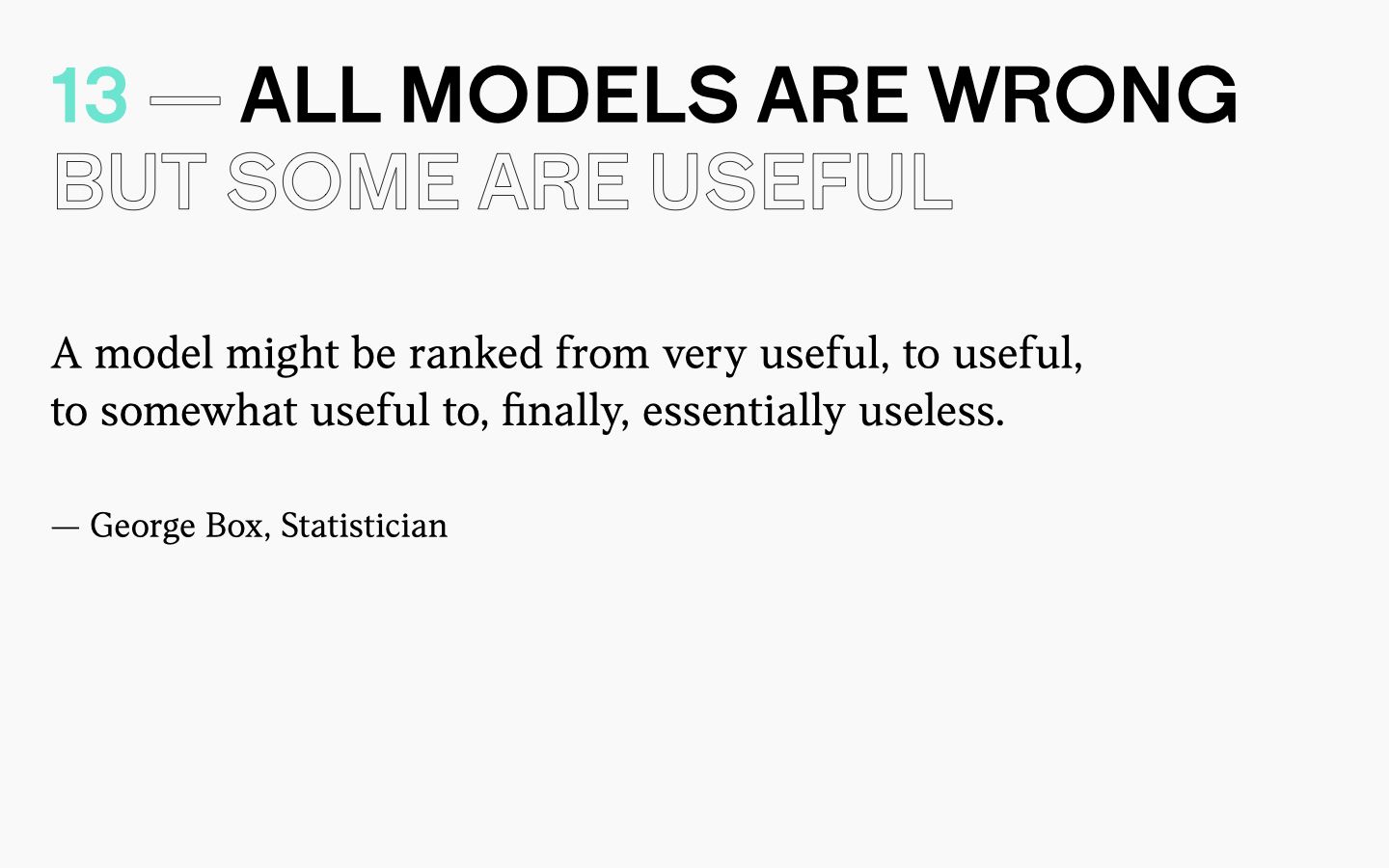
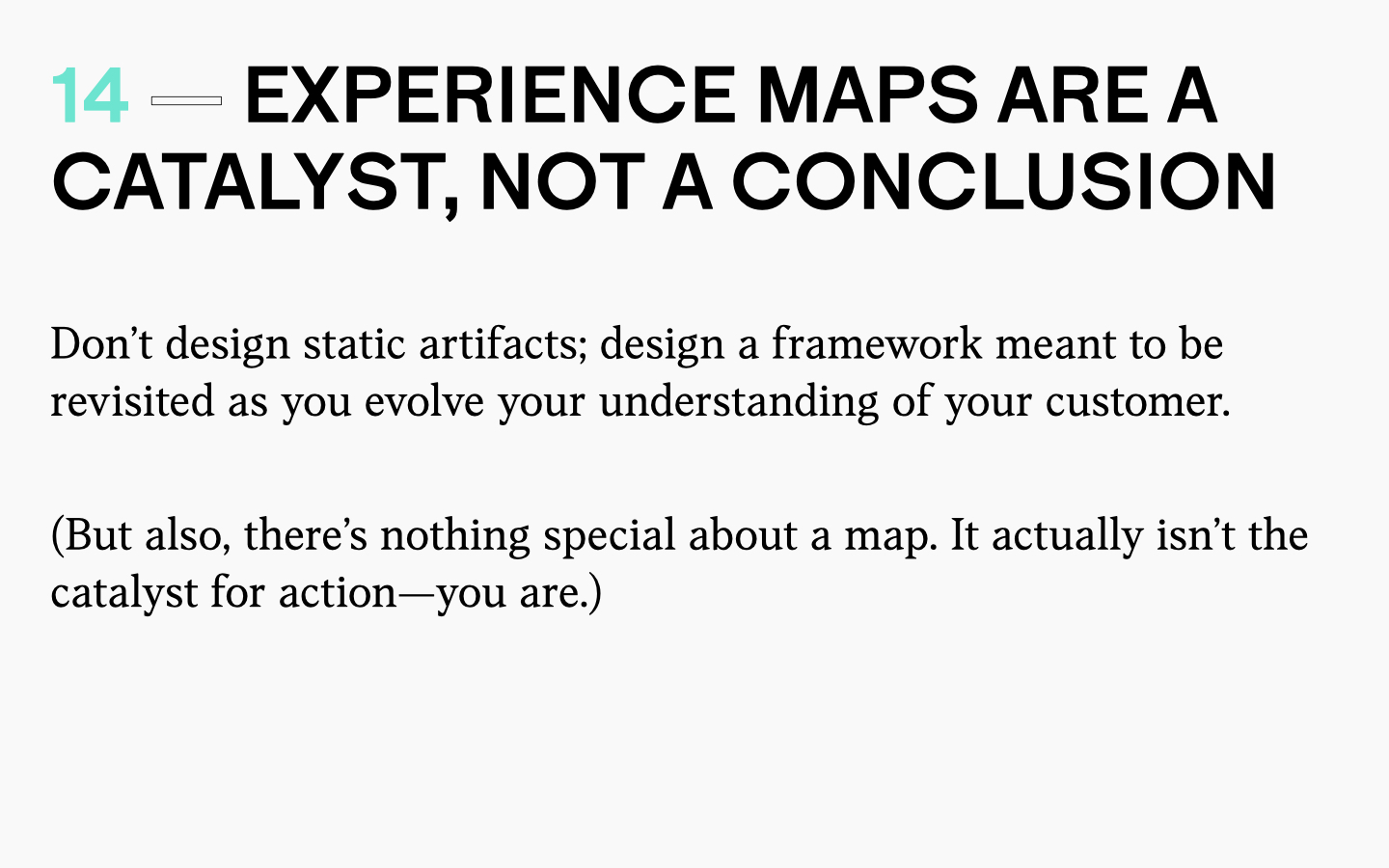
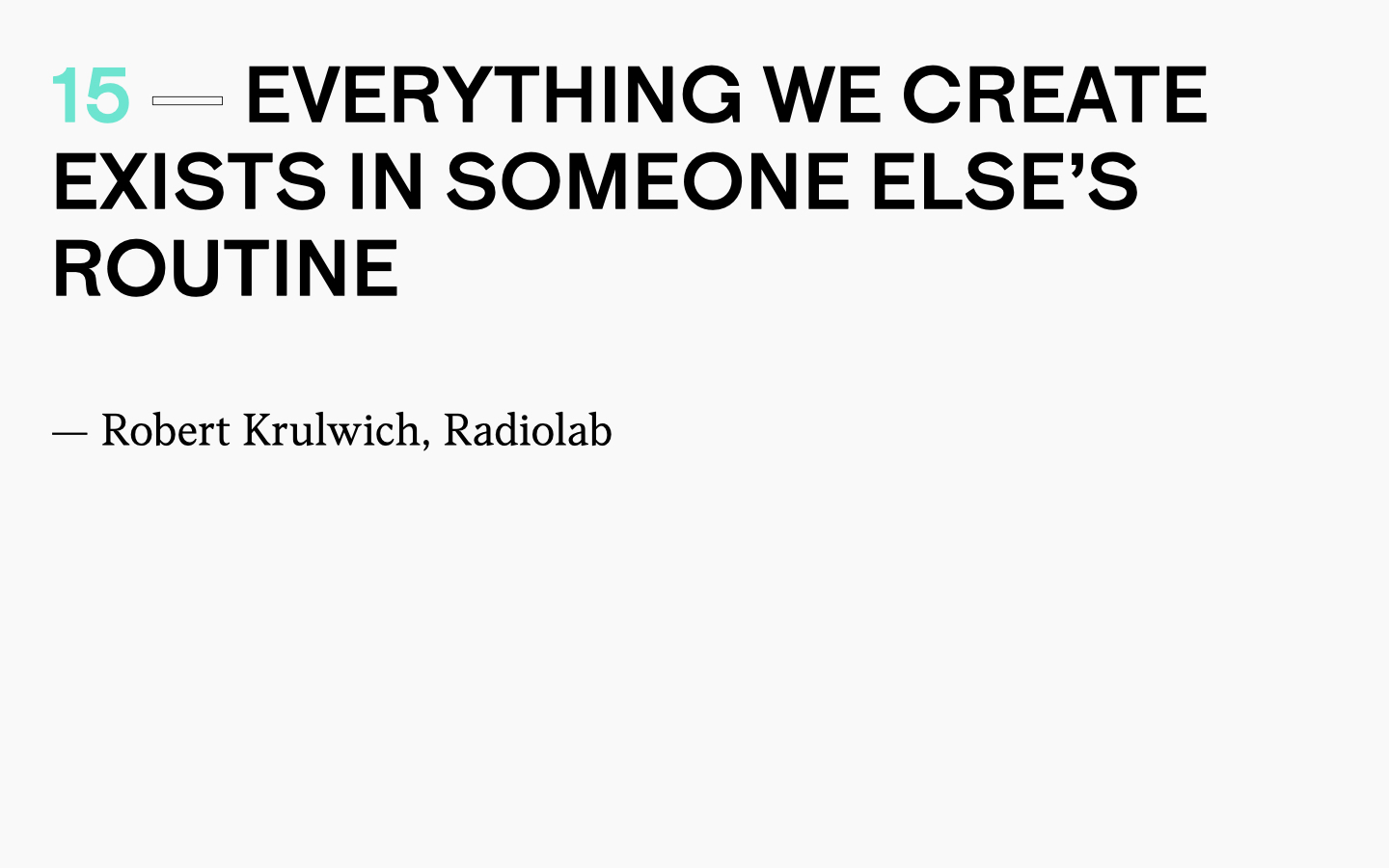
The more I see design playing into conversations about ‘proving ourselves’, the more it feels like perpetuating siloed practices in service of our own job security.
Yes it’s important to justify investment in design. But we’re going about things in incomplete, micro ways. Nothing we ever do will purely stand on its own. Everything involves multiple disciplines and it’s rare that a single number will fully capture the truth. We should integrate disciplines more and push the business to as well.
We have nothing to prove as designers, but we can be the single best discipline to simplify, unify & amplify disparate efforts. Lead with a unified story and design efforts might just fall into place.
As a path forward, here’s one way I saw my team work well at Code and Theory*, by defining a measurement strategy. Design contributes to the KPIs and signals that laddered up to the larger story for the business, but something like usability or satisfaction wasn’t an end goal in itself! By tethering design to behavior change affected we demonstrate our ability to be agents of positive change and forward momentum for customers and businesses.
Measurement Approach:
Here’s an example for a Clinical Trials program:
1) GOAL: More patients, completing more clinical trials, faster.
2) OBJECTIVES: Drive Brand Trust + Cultivate Quality Partners + Improve Efficiencies
3a) SAMPLE PROPOSED KPIs:
4a) EXAMPLE SIGNALS
3b) SAMPLE PROPOSED KPIs:
4b) EXAMPLE SIGNALS
Establish baselines. Report on them. Rinse wash repeat. Demonstrate traction now that we’re consistently reporting on metrics that matter—ones that specifically tell a company story.
Pro Tip: anchor with a journey / service blue print. Call out where/how customers are facilitated through the system. Humanize it. Make people care, actually feel something, remember why they do this work in the first place!
*The approach above was the work of the insanely smart Anna Silva. I hope she’ll forgive me for sharing a peek into the creation of a unified narrative for a new experience driven digital ecosystem we were designing.

I was recently asked how I got into teaching. Here’s what I’ve found success with:
[#AUTHENTICITY] I teach subjects I’m excited by, that I’ve spent time studying and I have developed a point of view on:
I teach to learn; it forces me to articulate what I believe, exposes me to many new people / ways of thinking, and ways my thinking has to bend & flex for all students present. (Try guiding 20 students each mapping unique journey maps for their individual theses—not your typical journey mapping workshop!)
[#RELEVANCE] I try to create more adjacent possibilities to where I am at the moment. I identify a need (ie themes surfaced while viewing final thesis presentations, in a career fair/portfolio review, talking to other teachers, department chairs, etc. to understand problems they’re facing, etc), and an audience that can benefit from my work. Then I reach out and start a discussion with thought starters and proposals.
Also, I talk to students. See what they aren’t getting that they wish they had.
[#EXCELLENCE] I take the time to craft bespoke workshops for programs/orgs to specifically address the needs of the program/students. This helps them offer something timely and highly tailored.
_____
TL;DR Make time for what you want more of, think deeply about what you can uniquely offer, think about what different school programs might be struggling with (course curriculums don’t always keep up with the changing demands of our industry or practice), identify the doors you need to knock down, and go go go!
IF my approach doesn’t sound right for you —
I hope you make something today so insanely wonderful that they see it, love it, EAT IT. (Go ahead folks, impress yourself!)

via Giles Edwards.
I'm not sure I or anyone else have a secret map to offer here, but here are a few thoughts I've found to help when I'm curious or anxious for the future:
To this end, I've offered a few facets below to construct some spectrums for you to understand where you currently are and where you'd prefer to be in your practice. I mix and match them to help me broaden types of jobs I look at and problems I may be interested in pursuing.
Pick the few that are most important to you at this point in your career or design practice. You won't ever get everything you want from every job, so it's up to you to know what is absolutely non-negotiable (Location? Company size? Do they have a bandsaw?) or what may be unrealistic, yet aspirational and worth striving for.
My approach is to build a practice with both breadth and depth, based on what interests me most at this time in my life/career (since I'll be able to sustain my enthusiasm for the challenges that all work brings.)
* In a smaller company, you might own the design of a full brochure for an art gallery or design all UI/UX for an app. If you work for Facebook though, you might work specifically on product features within admin tools for businesses advertising on the platform, which might just affect a billion+ people and millions of brands. Or you can aspire to be the VP of the Like Button! My two cents: It’s easier to work on a large stage and scale back later in life, but would be very tough to start small and scale up to larger clients later on in your practice.
© 2024 — All Rights Reserved
© 2024 — All Rights Reserved
© 2024 — All Rights Reserved
© 2024 — All Rights Reserved